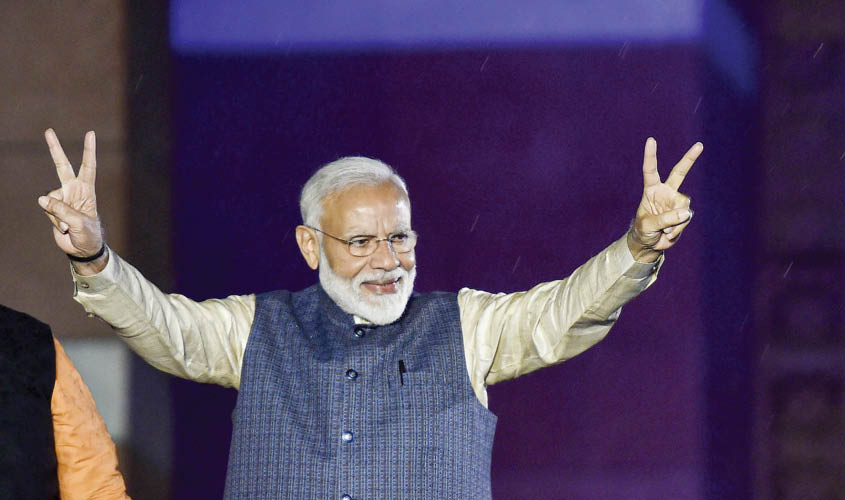The past month’s reforms have ensured that the next decade will bring untold prosperity to farmers and workers.
The 2020 Monsoon Session of Parliament will go down in history for ushering in modern India’s most transformative economic reforms. Farmers are now free to sell their produce to whoever they wish, and the hitherto inflexible labour market has been freed up.
Economic reforms that economists salivated over, but which politicians considered too hot to handle, have now been delivered by the Narendra Modi government. The removal of the dead hand of government from vital parts of the economy—with the associated opportunities for pelf they provided to politicians and bureaucrats—has naturally resulted in an avalanche of criticism. But the benefits to the national economy are certain over the decades ahead.
The British established state capitalism in India—there was a form of laissez faire for British businesses, but strict state control of entry and exit for Indians. During World War II, the state’s control was greatly expanded.
For industry, the extensive Licence Raj (introduced during the war) was largely dismantled by P.V. Narasimha Rao in July 1991. But state intervention in agriculture, which began in 1886 with the British establishing mechanisms to control the prices of raw cotton, and extending those regulatory mechanisms to grains the following year, were expanded by the Nehruvian state.
In 1965, Prime Minister Lal Bahadur Shastri removed many of the controls on food production—allowing productive areas to grow rapidly, access better-quality seeds, credit, and irrigation—and ushered in the Green Revolution. This boosted farm productivity, and enabled India to become self-sufficient and then a net exporter of rice and wheat.
But the distribution of agricultural produce remained tightly regulated, with state governments acting as monopsonists. Farmers were obliged to sell their produce to the mandi established by each state’s APMC (Agricultural Produce Marketing Committee). The price farmers received from the APMC was a fraction of what retailers paid, with the mark-up (averaging 50%) accruing to “middlemen” (typically politicians).
The Modi government’s reforms free farmers from servitude to the APMC, allowing farmers to sell (even export) their output to whomever they wish, without the obligatory involvement of any intermediary. This will be a boon to farmers (enabling them to sell at a price closer to those that retailers pay), but also a bane to politicians who run the APMCs and make bountiful profits from mediating between farmers and the ultimate buyers of their produce.
The MSP (minimum support price) mechanism will remain as an interim source of support to farmers. But as the market mechanism begins working, fewer and fewer farmers will need the MSP as a prop. Reform of agricultural pricing took a whole decade for Deng Xiaoping to implement in China (1979-89), but has now been enacted in India in a 4-month blitz.
The reforms to the labour market neatly complement the farm-sector reforms. Nearly half of India’s people claim to be farmers, but they produce just a sixth of India’s GDP. This implies that the average productivity of each farmer is substantially lower than the productivity of the average Indian worker.
Hence, moving farmers to jobs elsewhere in the economy will boost average productivity, both by reducing the pressure on the land (which has led to increasingly uneconomic holdings) and by creating jobs in more productive sectors. Japan, followed by Taiwan and South Korea, demonstrated how to accomplish this—by starting with labour-intensive manufacturing that absorbs surplus labour (those whose marginal productivity is low) from agriculture.
After the war, Japan had 12 million workers who were “surplus” to farm needs. Textiles, garments, shoes, toys and processed-food industries absorbed the surplus labour from farms, generating near-full-employment within a decade, by which time Japan’s focus was turning to “heavy and chemical industries”.
India was the world’s largest textile manufacturer through most of human history. Inimical trade policies over the past two centuries, coupled with an inflexible labour market since the 1950s, combined to dislodge India from its natural calling as the world’s clothier.
India’s onerous labour laws have deterred companies from employing more workers, as it was near-impossible to lay them off later. Since 1973, any firm with more than 100 workers needed state government permission to lay off any worker; this ceiling has now been raised to 300. More propitiously, employers are now free to employ workers on fixed terms, neatly precluding any need to “fire” a worker. Instead, they can be hired for another term if needed.
Employers thus have complete flexibility about new employees, the centrepiece of reforms that have simplified 44 complex labour-related acts into four simple codes, eliminating more than two-thirds of all labour regulatory filings.
When coupled with a globally-competitive corporate tax rate of 17% for new manufacturing units, India has created the ideal policy environment for a big spurt in labour-intensive manufacturing.
UP, Bihar, Odisha and Madhya Pradesh—hitherto the biggest sources of internal-migrant labour—have massive pools of surplus labour like Japan did in 1950. If they can capitalise on the new labour laws, labour-intensive manufacturing will take off in their states, drawing more workers from over-burdened farms, and lifting average productivity and real incomes.
The past month’s reforms have ensured that the next decade will bring untold prosperity to the farmers and workers of India, generating a rising tide of demand for steel, cement, aluminium, petrochemicals, cars, tractors and that lifts ever more boats across the nation.
Prasenjit K. Basu is a former Chief Economist for India & SE Asia at Credit Suisse First Boston, and author of the award-winning book “Asia Reborn”.

